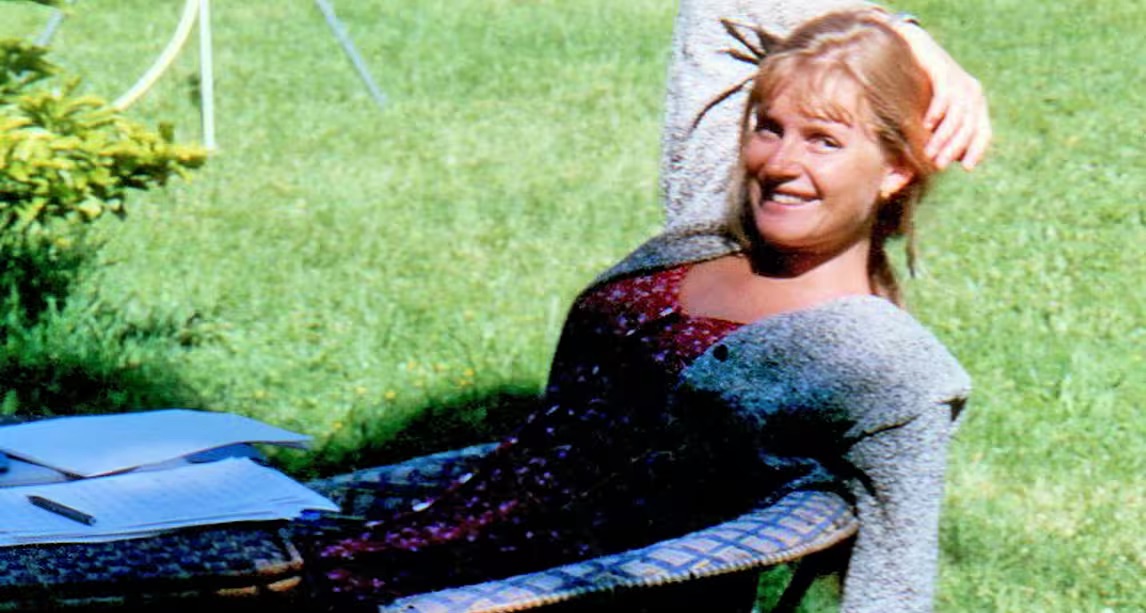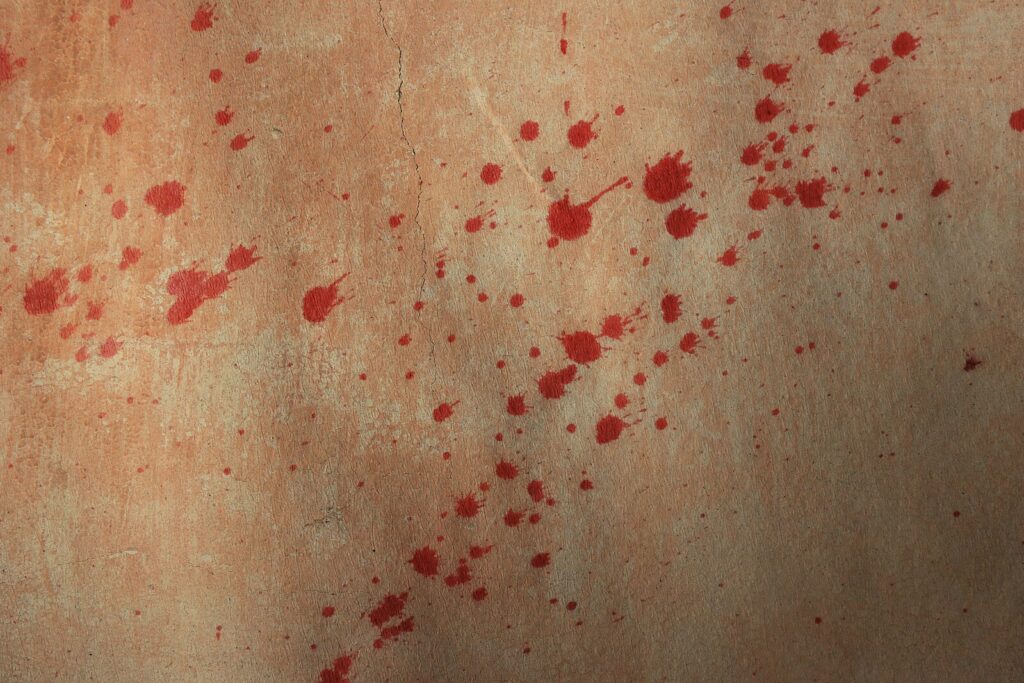Now Reading: Post-Mortem Examination in Putrified Bodies
-
01
Post-Mortem Examination in Putrified Bodies
Post-Mortem Examination in Putrified Bodies
Introduction
Death is an inevitable phenomenon. Attempts were made to define death from long back with the development of science and technology. Death is not an event it is a process, medically and scientifically death is a process of cessation of different tissues and organs at different rates. ‘Thanatology’ is the branch of science with deals with the study of death.
Statutory definition of death is defined in the section 146 of Indian Penal Code which states that ‘the word ‘death’ denotes the death of a human being unless the contrary appears from the context. In Section 2(b) of the Registration of Births and Deaths Acts, 1969 death is defined as the permanent disappearance of all evidence of life at any time after live birth has taken place.
According to ‘Bishop’s tripod of life’ “one’s life is sustained on the three vital and interlinked systems of the body namely-respiratory system, nervous system and circulatory system.” This is the oldest concept about death and the new one as well which talks about brain death with different between vegetative state and death. All the other systems are directly and indirectly dependent on these three systems. Death is of two types; molecular or cellular death, which can be very basically defined as the death of a single cell and next type somatic or systemic death which is the irreversible and complete stoppage of respiration, circulation and brain functions (bishop’s tripod of life).
Postmortem changes
Changes which happen in the body after death are called post mortem changes. The field of study which deals with the changes of human body after death or study of postmortem changes is forensic taphonomy. Post mortem changes occur at different rates at different bodies depending on various internal and external factors. Following death, various physical and chemical changes occur in the body. These changes are complex and intricate in nature. The sequence and nature of these changes are significant for estimating the time since death i.e. the Postmortem Interval, or PMI, which is the most important application of forensic medicine. Some changes are related to somatic death and some are related to cellular death therefore some changes appear immediately after the death and some changes occur late.
Post mortem changes can be divided into three different stages:
● Immediate postmortem changes
● Early postmortem changes
● Late postmortem changes
Immediate postmortem
Immediate changes of death are the signs or indications of death. Immediate changes are related to the somatic death which is linked with the irreversible cessation of functions of brain, lungs and heart which are the most vital organs.
⮚ Irreversible stoppage of nervous system: Irreversible stoppage of nervous system is characterized by insensibility with the loss of motor or sensory functions. Widely fixed and dilated pupils with no reaction to light are also noted in this stage.
⮚ Irreversible stoppage of respiratory system: Irreversible stoppage of respiratory system happens with somatic death. Confirmed with the complete cessation of respiration for 3-5 minutes except the voluntary acts of breath holding. Feather test, Mirror Test and Winslow’s test are some of the tests of historical importance.
⮚ Irreversible stoppage of circulatory system: It is confirmed with the complete irreversible stoppage of heart sound for 3-5 minutes. An ECG test with flat recording for five minutes confirms the irreversible stoppage of circulatory system.
Early postmortem changes
Changes which are usually seen in the first 12-24 hours of death are the early postmortem changes. Early post mortem changes are related with molecular death. Common changes seen in the early postmortem changes of death are
⮚ Changes in eyes
In the early post mortem stage, eyes undergo various changes due to the cessation of the vital organs and other factors. Some of the changes seen in eyes during this stage are: loss of corneal reflex except in cases of deep insensibility like epilepsy, narcotic poisoning etc, opaque appearance of cornea due to lack of lachrymal moistening, Eyeballs become flaccid due to lack of intraocular tension, trucking in retinal vessels due to loss of blood pressure, pupils usually gets dilated and constricts due to rigor mortis of the iris, rise in the potassium value of vitreous humour,
⮚ Changes in skin
Due to draining of blood vessels, skin becomes pale in color, skin losses its elasticity and also becomes lusterless. Lips become hard and dry in nature.
⮚ Algor mortis: It is also called as postmortem cooling. It is the process of cooling of the body after death. 37.2 degree Celsius, which is the normal temperature of human body decreases after death due to the inability to balance the heat production and heat loss. The body continues to loss heat until it becomes equilibrium with the surrounding temperature. Algor mortis is used to estimate the Post Mortem Interval (PMI), which approximately gives the number of hours after death. PMI is the ratio of Normal body temperature or rectal temperature to the rate of temperature fall per hour. Manner of death, condition of the body, age, atmospheric temperature, initial body temperature, Medium in which the body is exposed to be are some of the factors affecting the process of algor mortis. Due to various factors like bacterial/viral infections, asphyxia, activity of the muscles, tetanus etc, there occurs an initial rise in the temperature of the body after death followed with the usual cooling. This phenomenon is called post mortem caloricity.
⮚ Rigor mortis: The stiffening of the muscles of the body after death is called as rigor mortis. It is also called as cadaveric rigidity. Rigor mortis is related with molecular death. Due to the lack of adinosinetriphosphate (ATP) levels after death, muscles of the dead body fail to relax and which will make it hard and rigid. Rigor mortis is first observed in involuntary muscles followed by voluntary muscles. According to rule of 12, it takes 12 hours to form rigor mortis, it stays for another 12 hours, and it another 12 hours to disappear. Factors like age, person’s physique, season, condition of muscle before death and cause of death affects the formation of rigor mortis. Rigor mortis has various medico legal significances. Identifying the sign of death, estimation of time since death, understanding the position of the body are some of them. As rigor mortis is not directly related with nervous system, it can also be observed in cases of paralyzed limb.
⮚ Livor mortis: It is also called as postmortem lividity. It is one of the most obvious changes seen in the early postmortem stage of death. Blood circulation is a continuous process in a living individual due to the pumping action of the heart. But once the person dies, the flow of blood starts to flow towards the dependent parts of the body due to the effect of gravity. As a result, the low lying area of the body which is facing the ground appears in a purplish or reddish purple color. Lividity is initially seen as forms of patches which usually takes about 1-3 hours and increases and then fully appears in the body within 6-8 hours. It is an intra vascular phenomenon. Factors like temperature, complexion, hemorrhage, position and anemia affects the formation of livor mortis. Due to the compression or pressure effect offered by the low lying areas of the body and areas which are in close contact with the surface, postmortem lividity will be absent in these areas. This is absence is called contact flattening or contact pallor. Estimating the time since death, understanding the position of deceased at the time of death, identifying the cause of death etc are some of the medico-legal implications of postmortem lividity.
Late postmortem changes
As the stage of late postmortem changes arrives body undergoes various additional changes. It is the stage of decomposition. It is the sure sign of death. Decomposition is the stage where disintegration of tissues occur. It involves the formation of simple inorganic constituents from the breakdown of complex organic body constituents. Depending on various factors like temperature, moisture levels, etc rate of decomposition can be different for different bodies. Some cells have already started the process of decomposition while some cells have not as it is related with molecular death and also keeping in mind the fact that death is considered as a process and not a single event. Autolysis and putrefaction are the two processes which contribute to the decomposition process.
Autolysis: The word ‘auto’ means ‘self’ and ‘lysis’ means ‘destruction’ As the result of molecular death, ultimate cell death occurs releasing certain enzymes from each cells which are responsible for the destruction or lysis of the tissues. It is a complete chemical process stimulated by decreased oxygen level and decreased intracellular pH . This can be prevented by freezing the tissues. This process is characterized by tissue softening and liquefaction. Whitish appearance of the cornea is the first external sign of autolysis. Effect of bacterial action is absent in this process. The process of autolysis starts within 3-4 hours after death and is fully completed in 2 to 3 days or more.
Putrefaction
Putrefaction is the decomposition process carried out by microorganisms. Both aerobic and anaerobic microorganisms are responsible for the process of putrefaction process. The process is accelerated with warmth and moisture conditions. After the stoppage of homeostasis the natural microbial floras which are present in various sites of the body migrates from their normal sites to the blood vessels and then spreads all over the body. When this happens internally, external microorganisms enter the body through various openings and wounds present all over the body. These microorganisms keep growing as there is absence of the normal defense mechanisms and immune responses and feed on the carbohydrates and proteins of the body and in the blood. Lecthinase is a certain type of enzyme which is responsible for tissue lysis. An important bacteria responsible for putrefaction is Clostridium welchii which hydrolyse lecithin and is responsible for the lysis of blood cells. Bacillus proteus, Esteria coli and large number of Staphylococci and Streptococci are the common bacteria which are involved in the process of putrefaction.
Examination
As a result of the enzymatic activity of various microorganisms which are aerobic and anaerobic in nature, the putrefaction changes starts to develop in the body very soon and the inorganic conversion of body constituents occur rapidly in time. Putrefactive changes are at an optimal rate in around a temperature of 70-100 degree Fahrenheit. Most putrefactive bacteria act even at low temperature of below 70 degree Fahrenheit but their propagation does not improve below 70degree Fahrenheit which is at low temperature. Therefore period of time and cause of death at a temperature above 70degree F are the two major factors in which the spread of putrefaction depends on. Except in cases of extreme temperature rise and humid conditions, putrefaction is followed by the disappearance of rigor mortis from the body whereas in extreme conditions the presence of rigor mortis is not completely disappeared even when putrefaction has occurred. This usually occurs in areas experiencing huge climate changes and extreme climatic conditions.
Factors favorable for the growth and action of microorganisms which causes putrefaction are rapid reduction in the level of tissue oxygen, considerable rise in the hydrogen ions in the tissue, availability of enough of moisture in the body, optimally warm temperature availability etc. Dissolving of body tissues mainly into gases, liquids, and salts will lead to the disappearance of all the organic matter leaving little inorganic matter in the bones. The putrefactive microorganisms originate from the extrinsic and intrinsic tracts and sites of the body.
The beginning of putrefaction is associated with primarily three changes. They are
● External putrefactive changes
● Collequative putrefaction
● Internal putrefactive changes
⮚ Examination of external putrefactive changes
Majorly external putrefaction changes include four major changes. They are discoloration of skin, Skin marbling, Liberation of foul smelling gases, and arrival of maggots.
Discoloration of skin: The first externally visible changes which includes in the external putrefaction changes is the appearance of greenish blue/greenish black discoloration of the skin mainly over areas of right iliac fossa which will later spread to other areas of the body. This is due to result of hemolysis of RBC’s. By the action of hydrogen sulfide hemoglobin gets converted into sulpmethemoglobin which results in the discoloration. It takes almost 12-24 hours for color change to occur in the right iliac fossa and around 48 for the whole body.
Skin Marbling: As a result of decomposition of erythrocytes, color change followed by a mosaic like pattern on the lining of superficial veins where it is converged is formed. It appears in greenish black in color. This phenomenon is termed as skin marbling. Neck, right iliac fossa, and limbs are the common sites of this phenomenon. The phenomenon starts to form within the first 24 hours after death and is developed completely within 36-48 hours.
Liberation of foul smelling gases: The amount of putrefactive gases increases as there is an increase in the action of bacteria and microorganisms involved in the process of putrefaction. The liberation of gases is due to the reductive catalysis of carbohydrates and body proteins. In summer the liberation occurs within 12-18 of death and 18 to 24 hours in winter. Hydrogen sulphide, ammonia, methane, marsh gas, carbon dioxide etc are the common gases liberated during this process. The gases get accumulated mainly in the hollow and solid visceral sites of the body like inside the intestines, under the skin etc. The pressure effects of these gases are of medico-legal importance.
The various pressure effects of these gases are as follows: (A)false rigidity formation due to gas under the skin. (B)Body bloating which results in swollening of eyeballs, eyelids, nose, cheeks, and breasts. (C)Postmortem liquefaction of blood resulting in the shifting of postmortem hypostasis (D)Formation of putrefactive blisters, cuticle denudation, slipping of the skin of hands and feet, detachment of nails and hair. (E)Enormous swollening of male genetelia (F)Emptying of heart etc.
Gas collection in the hollow viscera is done within 12-18 hours of death and under the skin and inside solid viscera it gets collected within 18- 48 hours of death.
Arrival of maggots: As the process of decomposition progress, the distinctive odour emitted by the dead body attracts insects, especially flies. Once they enter inside the body they start to live inside particular areas of the dead body and completes all their stages of life. Before the decomposition of the skin, they lay eggs at particular sites of the human body like between the lips, on the eyelids, in the nostrils, margins of fresh wound and after the decomposition of skin, egg deposition can be made anywhere. Larvae which are hatched out of the eggs are also called as maggots. They invade inside the dead body and secrets enzymes which are also responsible for the destruction. Post mortem interval can be estimated by studying the life cycle of the particular insect invaded. The scientific field of study about the estimation of time since death from insects invaded is called forensic entomology.
⮚ Collequative putrefaction
Liquefaction of tissues is called as collequative putrefaction. Mainly the soft tissues and organs become liquefied. The walls of the abdomen become soft and it releases the contents of the abdomen to protrude out.
⮚ Internal putrefaction changes
Internal organs also undergo putrefactive changes along with external organs. The putrefaction of internal organs depends on various factors like organ’s firmness, organ’s moisture content, etc. Brain, larynx, trachea, stomach and intestine, spleen, liver are some of the organs which undergo putrefaction early. Esophagus, diaphragm, heart, lungs, kidney, urinary bladder, prostrate are the organs which undergo late putrefaction changes. In some cases of extreme putrefaction presence of prostrate or uterus has medicolegal importance as it helps in the determination of sex from such bodies.
Factors influencing putrefaction
Factors influencing putrefaction are of two types. There are external and internal factors which influence the process of putrefaction.
External factors
o Temperature: High temperature and low humidity is favorable for the process of early decomposition. Between 21°C to 43°C is a favorable temperature.
o Moisture: It is an essential factor for decomposition as the microorganisms require moisture for their activity. It favors the process of decomposition. Due to this the bodies containing more water decomposes at a faster rate than dry ones.
o Air: Movement and availability of air is directly proportional to the rate of decomposition.
o Method of burial: Bodies buried in shallow grave shows decomposition changes earlier than ones in deep grave. According to Casper’s dictum decomposition rate is eight times slower under soil, two times slower under water when compared with air (1:2:8)
Internal Factors
o Sex: No direct influence of sex in decomposition except for females in cases of septicemia
o Age: Due to less amount of moisture the bodies of children decomposes rapidly than adults.
o Condition of the body: Fat bodies show more signs and are earlier foe the process of decomposition.
o Cause of death: Depends on various diseases which causes death.
Modifications of putrefaction process
● Adipocere Formation: It is a modified form of putrefaction. With the process of hydrogenation and hydrolysis the fatty tissues in the body gets converted into a waxy soft material in the dead body which is called Adipocere. This process is called Adipocere formation.
o Factors influencing: Adipocere formation retards in cold weather and accelerates in hot climate.
● Mummification: Process is characterized by the formation of dehydration or drying desiccation of the tissues and it is a modified process of putrefaction. Conversion of the body into a dry, hard and leathery mass is seen.
o Factors influencing: Body in dry place with warm dry air circulation, e.g. body buried in sandy soil, the soft parts become desiccated and putrefaction is inhibited.
Sufficient care is necessary for the detailed and proper examination of the decomposed or putrefied bodies as the body has already started with the processes of decomposition. Lack of care result in the difficulty in examining the injuries. The autopsy procedure for decomposed body is the routine autopsy and must me completely done. As it is an advanced stage of decomposition, various features and identifications have disappeared or may not be appreciated, for example the ligature marks on the neck of a decomposed body may have disappearance of the clear mark on the neck and there can be peeling of skin. A bended pair of steel hooks with long handles is one of the most widely used tools for the examination of such bodies. It can be used to open various incision and abdomen by hooking up and also for opening and hooking up of organs like lungs and heart. Y-shaped incision, modified Y-shaped incisions, I-shaped incision, elongated X-shaped incision are the common types of incisions that are practiced commonly and routinely in medical practices. The presence of maggots on the body can alter the shape of the injuries. Sometimes in some bodies there may be the presence of maggots or pieces of clothes stuck on them. In such cases, body must be made soft by immersing it in weak carbolic acid which is Lysol; this will help to properly get the samples without disintegration. The maggots or any other insects present on it can then be send to the laboratory for further analysis. Viscera is preserved in some cases of advanced decomposition, where cause of death cannot be determined. Identification features like tattoo, marks on the body, fingerprints etc can be used when the face of the body is distorted because of decomposition. In some cases of violent asphyxia, strangulation and hanging, the marks of ligature can still be seen and examined even after 5-6 days of decomposition with the peeling of the skin of the epidermis. A thorough external and internal examination must be done for decomposed bodies. Along with the putrefactive decomposition of the body, the body may also undergo features like mummification and adipocere formation. Speed of the putrefactive decomposition is slowed down with mummification. These changes must be recorded. In the initial stages of putrefaction it is possible to collect the samples of blood, vitreous humor and urine as it would difficult to collect it in advanced stages of decomposition. In such cases, cavities of chest and abdomen can be used to collect fluid. Effect of putrefactive changes makes many of the internal organs autolysed. They tend to become lighter as the decomposition process progresses. Due to this, weight of internal organs before and after decomposition can vary. Care must be taken not to confuse putrefactive changes with pathological processes. Sometimes in some extreme cases or in some advanced stages of putrefaction where cause of death could not be found, it can be added to the postmortem report as such.
Skeletonization
Skeletonization is the process of removal of tissues from the bones or skeleton. Skeletonization may be of two types. Partial skeletonization, where all the tissues are not completely removed from the bones leading to the exposure of parts of bone, and complete skeletonization where there is complete removal of tissues from the bones or skeleton. After the process of skeletonization, it almost takes more than 20 years by the human skeleton to be dissolved completely by the acids without leaving any traces of it in the soil.
Conclusion
Complete postmortem examination and relevant investigation must be done by a forensic expert whenever a body is referred to a forensic expert to establish various features of death. It is a must for the medical examiners to conduct proper scientific examination of each case to avoid further complications. Rule of evidence and chain of custody with a written documentation must be maintained to authenticate evidences.
References
● Burton and Rutty, Julian L and Guy N. (2010). The Hospital Autopsy, A manual of fundamental autopsy practice (3rd ed.). London: Hodder Arnold
● Biswas Gautam. (2015). Review of Forensic Medicine and Toxicology. New Delhi: Jaypee Brothers Medical Publishers
● Vij Krishnan (2011). Textbook of Forensic Medicine and Toxicology. (5th ed.). Chennai: Elsivier
● Bardale Rajesh(2011). Principles of Forensic Medicine and Toxicology. New Delhi: Jaypee Brothers Medical Publishers
● Sharma. R K (2011) Concise textbook of Forensic Medicine and Toxicology. (3rd ed.). Uttar Pradesh: Global education Consultants









